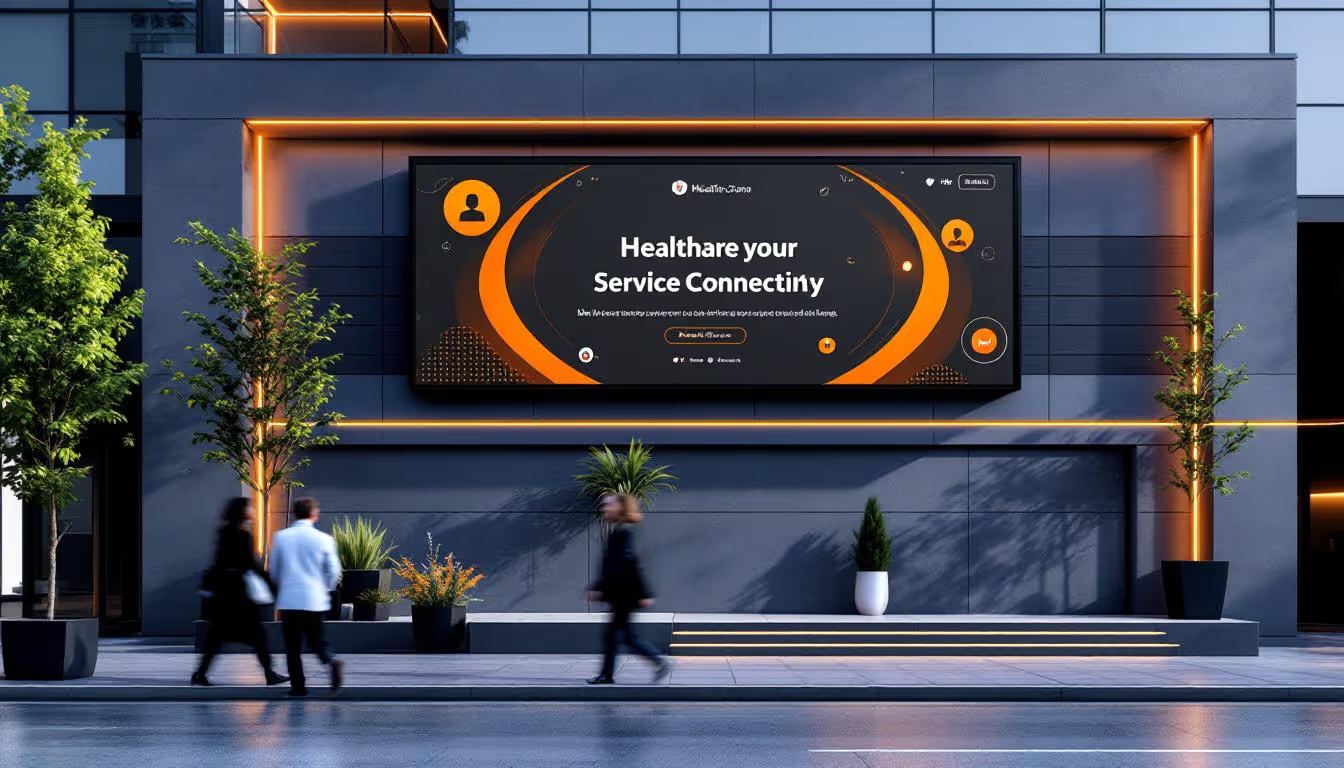How to Build an SEO-Optimized Medical Directory
Enhancing Online Presence for Healthcare Providers


How to Build an SEO-Optimized Medical Directory
Unlocking the Secrets to a Successful Medical Directory
Creating an SEO-optimized medical directory is essential for healthcare providers aiming to attract new patients and improve their online visibility. This comprehensive guide outlines strategies, best practices, and technical considerations to build a search-friendly, authoritative, and engaging medical directory that ranks well on Google and other search engines. From technical SEO to content marketing and local outreach, discover how to elevate your practice's online reputation and achieve sustained growth.
Foundation: Establishing a Strong Directory Infrastructure
What steps are involved in creating a search-friendly medical directory?
Creating a search engine friendly medical directory requires careful planning and execution across multiple aspects of website development and online presence management.
First, establish a solid website architecture that is organized logically, with clear navigation pathways, dedicated service pages, and an intuitive search function. This makes it easier for users to find relevant information and helps search engines crawl and index content effectively.
Next, ensure NAP (Name, Address, Phone number) consistency across all online platforms, including the website, online directories, and review sites. Accurate and uniform NAP details not only boost local SEO but also build trust with users and search engines.
Mobile responsiveness is essential—your website must adapt seamlessly to various screen sizes and devices. With over 68% of health-related searches happening on smartphones, a mobile-friendly design improves user experience and search rankings.
Loading speed plays a critical role in SEO performance. Compress images, leverage content delivery networks (CDNs), and optimize code to achieve load times under two seconds, ensuring users don’t abandon the site before it fully loads.
In addition, implement technical SEO elements such as structured data markup (schema), which helps search engines understand your content better, leading to enhanced search listings.
Off-page strategies like building backlinks from reputable health-related websites and listing directories further establish your directory’s authority and credibility.
Content is another pillar—produce high-quality, relevant, and regularly updated information, including blog posts, health guides, and patient testimonials, all optimized with targeted local keywords.
Furthermore, leverage tools like Ubersuggest and LSIGraph for comprehensive keyword research. Focus on high-intent and local search terms such as
Claim and Optimize Your Google Business Profile

What is the typical cost of healthcare SEO services?
The typical cost of healthcare SEO services generally ranges from $1,500 to $5,000 per month for ongoing monthly services, with larger or enterprise healthcare providers often paying toward the higher end of this spectrum. On an hourly basis, SEO providers charge between $100 and $300 per hour, depending on experience and scope of work. The average per-project cost falls between $500 and $5,000, while larger or more complex campaigns may cost up to $30,000 as one-time projects. Factors influencing pricing include the size of the healthcare organization, website complexity, goals, and the agency's location and reputation. Healthcare providers should expect costs to be tailored to their specific needs, with custom strategies starting around $3,000 per month from specialized providers like WebFX.
Google My Business setup
Creating or claiming your Google My Business (GMB) profile is one of the foundational steps in local SEO. To start, navigate to the Google My Business website or app, and search for your practice’s name. If your profile exists, claim it; if not, create a new profile. This process involves providing essential information such as your practice's name, physical address, phone number, website URL, and hours of operation.
Verification process
Verifying your Google Business Profile is crucial to ensure your practice appears prominently in local results. Google typically offers several verification methods, including postal mail with a unique code, phone verification, or email. The most common and reliable method involves receiving a postcard at your practice’s physical address, which contains a verification code that must be entered into your GMB dashboard. Once verified, you'll gain full control over your listing, which enables you to update information and respond to reviews.
Accurate contact details
Maintaining consistency in your contact information—known as NAP (Name, Address, Phone number)—across your website, Google My Business, and other online directories is vital. Accurate details prevent confusion for potential patients and improve search engine trust. Ensure your contact details are correct, current, and formatted consistently in all profiles. This consistency helps search engines link your listings and enhances your local SEO rankings.
Adding photos and posts
Visual content significantly boosts your practice’s appeal and trustworthiness. Regularly upload high-quality photos of your facility, staff, and services to your GMB profile. These images should be current and professional. Additionally, utilize Google Posts to share updates, special offers, new services, or health tips directly on your profile. These posts keep your profile active and engaging, improving your visibility and encouraging patient interaction.
For a comprehensive and effective local SEO strategy, optimizing your Google Business Profile by setting it up properly, verifying it accurately, maintaining updated contact info, and actively posting images and news is essential. This approach ensures your practice stands out in local search results and attracts more nearby patients.
Building Local Visibility through Directory Listings and Reviews
How can healthcare practices improve their search engine rankings and online visibility?
Healthcare practices can significantly enhance their search engine presence by developing and implementing comprehensive SEO strategies. These include conducting detailed keyword research to identify relevant, often searched terms and creating high-quality, authoritative content that adheres to E-E-A-T (Experience, Expertise, Authoritativeness, Trustworthiness) and YMYL (Your Money or Your Life) standards.
Optimizing on-page elements such as titles, meta descriptions, headers, and images with appropriate medical keywords ensures better relevance in search results. Technical SEO factors like site speed, mobile responsiveness, and HTTPS security are equally critical, providing a seamless experience for users and search engines alike.
Focusing on local SEO is vital for healthcare practices aiming to attract nearby patients. This involves optimizing Google Business Profiles with accurate, complete information, including services, photos, and clinic hours. Consistent online citations for Name, Address, and Phone Number (NAP) across all directories reinforce local relevance.
Creating a website that is easy to crawl, with a logical structure and internal linking, improves SEO and user navigation. Regularly monitoring performance via tools such as Google Analytics, SEMrush, or Ahrefs allows practices to understand what strategies are working and adjust accordingly.
Whether managing SEO internally or through specialized agencies, tailoring efforts to the practice’s resources and goals helps ensure ongoing visibility. These combined efforts lead to higher rankings in local and organic search, increased website traffic, and more patient inquiries.
What strategies are effective for earning and managing online reviews?
Gathering and handling online reviews is essential for building trust and improving local SEO for healthcare practices. A proactive approach involves encouraging satisfied patients to share their experiences through automated review request systems integrated into appointment follow-ups or email campaigns.
Responding promptly and professionally to all reviews, especially negative ones, shows engagement and a commitment to patient satisfaction. This not only demonstrates transparency but also reinforces a positive reputation.
Incorporating positive reviews and testimonials into your website and online profiles boosts credibility and influences prospective patients’ decisions. Regularly updating your reviews ensures that your reputation remains current and trustworthy.
Monitoring feedback allows practices to identify service strengths and weaknesses, enabling continuous improvement. High quantity and quality of reviews, along with high star ratings, are influential factors that enhance local search rankings. Overall, active review management fosters a trustworthy online presence that attracts new patients and maintains a strong reputation.
What role do online citations and NAP consistency play?
Online citations—mentions of your practice’s Name, Address, and Phone number on various websites—are a fundamental component of local SEO. Ensuring these citations are accurate, complete, and consistent across all platforms prevents confusion and signals reliability to search engines.
NAP consistency across your website, online directories, social media profiles, and review sites improves local search visibility and enhances user trust. Including additional details such as accepted insurances, payment options, and multimedia like photos or videos makes your listings more appealing and informative.
Claiming and regularly updating your listings on platforms like Google, Yelp, Apple Maps, WebMD, and others ensures that all information reflects recent changes and maintains accuracy. Connecting these profiles to your website through links and embedding reviews can further boost SEO.
In summary, cohesive management of online citations and NAP details creates a stronger local SEO footprint, makes your practice more discoverable to nearby patients, and builds confidence with prospective clients.
Technical SEO: Optimize Site Speed, Schema Markup, and Mobile-First Design
Why is website speed optimization crucial for medical directories?
Fast-loading websites enhance user experience and are favored by search engines. For medical directories, quick access to information can mean the difference between gaining a new patient or losing one to competitors. To optimize speed, compress images without quality loss, leverage Content Delivery Networks (CDNs), and minimize code bloat by streamlining CSS, JavaScript, and HTML files. Regularly test site speed with tools like Google PageSpeed Insights and GTmetrix to identify and fix speed issues.
How does schema markup improve medical directory visibility?
Schema markup, or structured data, helps search engines understand your website’s content better. For medical directories, implementing schema types such as MedicalClinic, Physician, and MedicalCondition can improve the appearance of listings in search results, often resulting in rich snippets like star ratings, appointment links, or location maps. Proper schema markup also enhances compatibility with voice search and AI-powered assistants, increasing your directory’s chances of being featured prominently.
What are best practices for creating a mobile-friendly design?
With over 68% of health-related searches done on mobile devices, a mobile-first design ensures your site is accessible and easy to navigate on smartphones and tablets. Use responsive design frameworks like Bootstrap or Foundation to adapt layout to different screen sizes. Simplify navigation menus, enlarge clickable elements, and avoid intrusive pop-ups. Test your site on various devices to ensure consistent functionality and readability. Optimizing mobile user experience directly contributes to better search rankings.
Why is a secure HTTPS connection important?
Google prioritizes secure websites, especially in healthcare, where patient safety and data privacy are paramount. Transitioning your medical directory to HTTPS encrypts user data, boosting trust and compliance with privacy standards like HIPAA. Implementation involves obtaining an SSL certificate and configuring your server accordingly. An HTTPS secured site not only improves your SEO but also reassures visitors that their sensitive information is protected, encouraging more engagement and conversions.
Best practices for content optimization in medical directories
Effective content optimization in medical directories involves crafting clear, search-friendly headlines and meta descriptions that accurately reflect the content. Conduct thorough keyword research to identify relevant long-tail keywords and naturally incorporate them into well-structured, valuable content that addresses user intent. Organize information using headings, concise answers, and supporting evidence from verified sources, while also adding internal links to enhance site navigation. Ensure all technical SEO elements are optimized, including mobile responsiveness, image alt texts, and schema markup, to improve visibility in search results and AI-driven summaries. Continuously monitor performance metrics with tools like Google Analytics and Search Console, and update outdated content to maintain relevance and authority in the medical niche.
| Focus Area | Best Practices | Additional Details |
|---|---|---|
| Website Speed | Compress images, leverage CDN, minimize code | Use tools like PageSpeed Insights for regular checks |
| Schema Markup | Implement types like MedicalClinic, Physician | Use JSON-LD format for compatibility |
| Mobile Design | Adopt responsive frameworks, test on devices | Simplify navigation, enlarge touch elements |
| HTTPS | Obtain SSL certificates, configure server | Enhances security, builds patient trust |
This comprehensive approach to technical SEO ensures your medical directory is fast, trustworthy, and highly visible in local search results. Regular audits and updates are essential to adapt to search engine algorithm changes and emerging best practices.
More about medical directory technical SEO best practices: Performing detailed site audits, monitoring technical health, and keeping abreast of the latest schema types and mobile algorithms are crucial. Employ tools like Semrush and Ahrefs for keyword tracking and backlink analysis to refine your SEO strategies consistently.
On-Page SEO: Optimizing Titles, Descriptions, and Content Structure

What are best practices for content optimization in medical directories?
Effective content optimization in medical directories begins with creating clear, descriptive, and search-friendly page titles and meta descriptions. These elements should precisely represent the content of each page, incorporating relevant keywords to boost visibility in search engine results.
Thorough keyword research is essential. Use tools like Ubersuggest and LSIGraph to identify long-tail keywords and related terms that potential patients are searching for. Naturally integrate these keywords into your content to improve relevance and ranking.
Organize your information using structured headings and subheadings (H1, H2, H3) that include targeted keywords. This not only helps search engines understand your content but also makes it easier for visitors to navigate and find the information they need.
Content should be valuable and address user intent. This means providing accurate, easy-to-understand, and comprehensive information about medical conditions, treatments, and services.
Supporting evidence from verified sources enhances credibility. Incorporate internal links to related pages within your website, such as linking a page about a specific treatment to a page about the related condition.
Technical SEO also plays a crucial role. Ensure your site is mobile-responsive, loads quickly, and has optimized image alt texts. Implement schema markup to help search engines better understand your content, which can lead to enhanced search listings like rich snippets.
Regularly monitor your SEO performance using Google Search Console and Google Analytics. These tools provide insights into your traffic, rankings, and user engagement, allowing you to refine your strategy.
Keep your content up-to-date, updating outdated information and adding new insights or testimonials. This helps maintain your site's authority and relevance in the competitive healthcare niche.
In summary, best practices involve a combination of strategic keyword placement, structured and accessible content, and technical optimizations that follow the latest SEO standards tailored for healthcare providers.
Content Marketing Strategy for Medical Practices

What strategies are effective for building and optimizing a medical directory for search engines?
To develop a successful medical directory that ranks well in search engine results, comprehensive content marketing is essential. Start by creating a website structure that is easily crawlable and indexable. This involves adhering to Google's technical SEO guidelines, such as implementing a proper robots.txt file, submitting XML sitemaps, and utilizing structured data markup like schema.org to enhance search listings.
Keyword research is the foundation of content strategy. Use tools like Ubersuggest and LSIGraph to identify relevant long-tail keywords and related medical terms, especially those with local intent to attract nearby patients. Build detailed, patient-friendly profiles for each practitioner and service, integrating these keywords naturally into titles, descriptions, and content.
Regularly publish a variety of high-quality content tailored to patient concerns and search intent. Blog posts addressing common medical questions, treatment options, or wellness tips can attract organic traffic and establish your authority.
Leverage multimedia content such as videos and testimonials. Videos increase engagement, improve dwell time, and help build trust with your audience. Optimize videos posted on platforms like YouTube by using relevant keywords in titles, descriptions, and tags.
Educational resources and FAQs are also vital. Structured FAQs serve both patient questions and search engines by targeting common queries in a concise, accessible format. They also help your site appear in featured snippets.
Implement a content calendar to plan and organize publishing efforts. This helps in maintaining consistent updates and targeting seasonal or trending topics. Planning posts around high-value keywords ensures focused efforts on terms that attract qualified visitors.
Moreover, your strategy should include off-site optimization, such as earning backlinks from reputable healthcare websites and local directories. These links validate your site’s authority and improve search rankings.
Lastly, monitor your SEO performance using tools like Google Analytics and Search Console. Analyze organic traffic patterns, bounce rates, and conversion metrics to refine your content strategy continually. Adjust keywords, update older posts, and expand content areas based on data insights.
Implementing these combined tactics—high-quality, user-centered content; multimedia engagement; strategic keyword targeting; and continuous performance analysis—ensures your medical directory is both informative and highly discoverable by search engines.
Backlink Building and Authority Enhancement
 Establishing authority and boosting search engine rankings for medical directories hinges significantly on acquiring high-quality backlinks from reputable sources. These backlinks serve as votes of confidence, signaling to search engines that your site is trustworthy and relevant.
Establishing authority and boosting search engine rankings for medical directories hinges significantly on acquiring high-quality backlinks from reputable sources. These backlinks serve as votes of confidence, signaling to search engines that your site is trustworthy and relevant.
High-quality backlinks come from well-established healthcare websites, educational institutions, and recognized industry authorities. These links are more valuable than numerous low-quality ones because they enhance your site’s credibility and domain authority. Strategies to secure such backlinks include creating highly informative and original content that other sites want to reference, and reaching out through targeted email campaigns.
Guest posting is an effective method to earn authoritative backlinks. By contributing expert articles or insights to reputable healthcare blogs and online magazines, your practice gains visibility and valuable backlinks. When guest posts include author bios with links to your site, they directly contribute to your backlink profile while also positioning your brand as an industry leader.
Local sponsorships and community involvement can generate quality backlinks naturally. Partnering with local organizations, sponsoring health-related events, or participating in community health fairs often results in backlinks from local news outlets, community websites, and sponsor pages. These not only improve local SEO but also demonstrate your commitment to community health.
Mentions from authoritative sites—whether through media coverage, interviews, or expert quotes—can also be turned into backlinks. Ensuring your practice’s credentials and contributions are highlighted on reputable platforms can lead to organic backlinks and enhanced reputation.
| Strategy | Description | Best Practices | Impact Area |
|---|---|---|---|
| High-quality backlinks | Links from trusted, high-authority healthcare websites | Develop original content, collaborate with trusted sources | Boosts domain authority and relevance |
| Guest posting | Publishing articles on reputable healthcare platforms | Focus on niche topics, include backlinks in author bio | Increases visibility and backlinks |
| Local sponsorships | Partnerships with community organizations | Participate actively, ensure your website is linked | Improves local SEO and community reputation |
| Site mentions and media coverage | Showcasing expertise in media outlets, interviews | Share your expertise, be accessible for media inquiries | Enhances authority and online presence |
Effective SEO for medical directories is not just about on-site content but also about building a robust backlink profile. Regularly earning links from reputable healthcare resources, news sites, and community organizations signals to search engines that your site is a trusted resource. This trustworthiness in turn elevates your search rankings and increases visibility among prospective patients.
Consistently monitoring your backlink profile with tools like Ahrefs or SEMrush helps identify new opportunities and detect unnatural link patterns that could harm SEO. Combining high-quality backlinks with ongoing efforts to produce authoritative, valuable content creates a sustainable SEO strategy that enhances both search rankings and patient trust.
Monitoring, Analytics, and Continuous Improvement

What are the best practices for content optimization in medical directories?
Effective content optimization in medical directories starts with creating clear and compelling headlines and meta descriptions that accurately reflect each page's content. This helps improve click-through rates from search engine results.
Conduct thorough keyword research using tools like Ubersuggest, LSIGraph, or Semrush to identify relevant long-tail keywords and related terms patients are searching for. Integrate these keywords naturally into well-structured and valuable content that addresses user intent and questions.
Organize the content using clear headings and subheadings, making it easier for search engines and users to find relevant information. Use concise and precise answers to common patient queries, supported by evidence and verified sources.
Supporting content with internal links to related pages and resources enhances site navigation and distributes authority across the website.
Technical SEO elements are also crucial. Ensure the website is mobile-responsive, loads quickly, and utilizes schema markup to help search engines understand the content better. Use descriptive alt text for images and videos to improve accessibility and SEO visibility.
Regularly auditing and updating content is vital to maintain accuracy and relevance. Remove outdated information, add new insights or developments in healthcare, and optimize pages based on the latest keyword trends.
To measure the impact of these efforts, use tools like Google Search Console and Google Analytics. Track key performance indicators such as organic traffic, bounce rate, time on page, and keyword rankings. Use these insights to refine your content strategy.
By continuously monitoring and adjusting your content based on data, your medical directory can improve its search rankings, attract more targeted traffic, and provide valuable, trustworthy information that builds credibility with patients.
Scaling SEO Efforts for Long-term Growth
What strategies are effective for building and optimizing a medical directory for search engines?
Building a successful SEO strategy for a medical directory requires a comprehensive approach that combines technical, on-page, and off-site tactics. Start by ensuring the website is easily crawlable and indexable. This involves implementing proper robots.txt files, submitting XML sitemaps to search engines, and using structured data markup (schema.org) to help search engines understand your site content.
Optimizing URLs with clear, descriptive, and keyword-rich slugs improves both usability and search rankings. Meta titles and descriptions should incorporate relevant keywords naturally to attract clicks from search results. Creating high-quality, unique content tailored specifically to your target audience is crucial.
This content includes detailed service and provider profiles, comprehensive health resources, FAQs, and patient guides. Organizing your site with a logical structure—grouping related pages, using internal linking effectively, and avoiding duplicate content—also enhances site performance.
Visual elements like images and videos should have descriptive alt texts and relevant metadata to improve accessibility and SEO.
Promotion plays a significant role in increasing your directory’s authority. Sharing content via social media and engaging with your local community can help boost backlinks and overall credibility.
Regular performance monitoring using tools like Google Search Console guides ongoing refinement. Adjust your strategies based on analytics data to focus on user-centered content and adhere to Google’s best practices.
Through these combined efforts, your medical directory will become more visible, credible, and user-friendly, supporting long-term growth.
Adding new content and service pages
Expanding your website with targeted new pages related to specific treatments, conditions, and locations helps capture more organic traffic. Each page should be optimized for relevant keywords, include detailed and accurate information reviewed by medical professionals, and feature clear calls to action.
Geographic expansion
Creating location-specific pages and optimizing for local keywords increases visibility in new markets. Claiming and updating Google Business Profiles for each location ensures accuracy and enhances local search rankings.
Backlink strategies
Acquiring backlinks from reputable health websites, local organizations, and directories improves your domain authority. Strategies include guest blogging, sponsored content, and outreach to community partners.
Video content integration
Incorporate videos such as practice introductions, patient testimonials, treatment explanations, and physician bios. Optimizing videos for search on platforms like YouTube enhances engagement and can drive significant traffic to your site.
| Strategy | Action Steps | Benefits |
|---|---|---|
| Content Expansion | Add detailed, optimized pages | Improve relevance and rankings |
| Local Expansion | Build local-specific pages, optimize GBP | Increase local visibility |
| Backlinks | Partner with reputable sites, guest posting | Boost domain authority |
| Video Content | Produce educational and testimonial videos | Engage visitors and increase dwell time |
Achieving success in healthcare SEO is a continuous process that involves regularly updating your content, refining your strategies based on analytics, and expanding your online presence into new markets and formats.
Integrating Multimedia and Outreach for Engagement
How do video marketing and educational videos enhance a medical directory?
Video content plays a crucial role in creating an engaging and trustworthy medical directory. By incorporating short, informative videos about medical conditions, treatments, and doctor introductions, practices can increase user engagement and dwell time on their site. Educational videos help demystify complex health topics, making information more accessible and encouraging potential patients to choose your practice.
Videos also improve SEO performance, especially when optimized with relevant keywords, compelling titles, and descriptions. Posting on platforms like YouTube and embedding these videos on your site increases visibility in search results. Regularly updating and sharing videos can boost your directory’s online authority, making it a trusted resource for health information.
Why are patient testimonials important, and how should they be used?
Patient testimonials are social proof that build trust and credibility. When happy patients share their experiences, these reviews can influence others’ healthcare decisions. Incorporate testimonials on your website, especially on service pages and a dedicated reviews or testimonials page.
Encourage patients to leave reviews regularly by making it easy through links and follow-up emails. Respond promptly to reviews, especially negative ones, to demonstrate active reputation management. Positive reviews can enhance your local SEO rankings, as reviews are a significant ranking factor.
What is the benefit of creating educational videos?
Educational videos serve to inform and educate potential patients about their health concerns, procedures, and treatment options. They position your practice as an authoritative source of reliable health information, which aligns with Google's E-A-T (Experience, Authority, Trustworthiness) principles.
By covering common patient questions and health topics relevant to your community, these videos can attract local traffic, improve search rankings, and foster patient trust. YouTube optimization, including relevant keywords and engaging thumbnails, further amplifies their reach.
How can social media engagement support a healthcare SEO strategy?
Active social media presence on platforms such as Facebook, Instagram, and TikTok helps promote your content, share patient success stories, and connect with your local community. Facebook business pages often rank high in local search results, making them an essential part of local SEO.
Engaging posts, videos, and community events increase your practice’s visibility and authority online. Regularly updating social profiles, responding to comments, and encouraging reviews help build reputation and trust. Linking all your social media activities back to your website creates a cohesive online presence that signals relevance to search engines.
Strategies to build and optimize a medical directory for search engines
| Strategy | Description | Benefits |
|---|---|---|
| Technical SEO | Use structured data, optimize site speed, ensure mobile-friendliness | Improves indexability and user experience |
| Content Optimization | Regularly publish relevant, high-quality content with targeted keywords | Boosts relevance and authority |
| NAP Consistency | Maintain consistent Name, Address, Phone across all listings | Enhances local SEO and trust |
| Google My Business Optimization | Claim and verify profiles, update information, add photos, encourage reviews | Increases visibility in local search and Google Map Pack |
| Backlink Building | Earn links from reputable healthcare sites and local organizations | Validates authority and improves rankings |
| User Engagement | Collect and display patient reviews, respond actively | Boosts credibility and local SEO |
| Multimedia Content | Incorporate videos, infographics, and images to enrich content | Engages visitors and improves SEO performance |
| Social Media Strategies | Maintain active profiles, share content regularly | Enhances online presence and community reach |
| Monitoring and Analytics | Use Google Search Console and Analytics to analyze performance | Guides strategy refinement for better results |
Effective healthcare SEO combines technical optimization, quality content, active reputation management, multimedia engagement, and ongoing performance analysis. Regularly updating your strategies based on analytics ensures continuous growth and increased patient acquisition.
How does multimedia and outreach integrate into overall SEO efforts?
Integrating multimedia content like videos and patient testimonials into your website not only improves user engagement but also signals relevance and trustworthiness to search engines. Outreach efforts—such as maintaining active social media profiles, managing online reviews, and building backlinks—further amplify your directory’s visibility.
Publication of diverse content types attracts a broader audience, answers patient questions, and encourages sharing, which builds backlinks and improves domain authority. This holistic approach ensures your medical directory remains a trusted, authoritative, and highly visible resource in local search results.
Additional considerations for healthcare SEO success
- Ensure your website is mobile-friendly, fast, and secure.
- Use schema markup to help search engines understand your content.
- Maintain accurate, up-to-date listings across all online profiles.
- Foster continuous patient engagement through reviews and social media.
- Regularly audit and refine your SEO strategies to adapt to new algorithms and market trends.
All these efforts combined create a compelling, authoritative, and user-friendly medical directory that ranks well in search engines and effectively attracts new patients.
Final Tips and Ensuring Long-Term Success
What strategies are effective for building and optimizing a medical directory for search engines?
Creating a successful, SEO-optimized medical directory requires a blend of technical, on-page, and off-site strategies to maximize visibility and attract new patients.
Start with a technically sound website foundation. This involves ensuring your site is easily crawlable and indexable by search engines. Implementing proper use of robots.txt files, submitting XML sitemaps, and incorporating structured data markup, like schema for medical entities, helps search engines understand your content better.
Design your URLs with descriptiveness and keyword relevance. Clear, descriptive URLs improve both user experience and search rankings. Optimize meta titles and descriptions for each page, including relevant keywords that reflect user search intent.
Content quality remains central. Develop high-quality, unique content tailored to your audience. This includes detailed provider profiles, comprehensive health resource pages, FAQs, and patient education materials. Content should incorporate relevant medical terms naturally, adhering to Google’s E-E-A-T principles: Experience, Expertise, Authority, and Trust.
A well-organized site architecture ensures visitors and search engines can navigate easily. Group related pages under logical categories, use internal linking wisely to distribute page authority, and minimize duplicate content with canonical tags.
Visual elements like images and videos should have descriptive alt text and appropriate metadata. Video content, optimized for platforms like YouTube, can significantly boost engagement and dwell time.
Off-site strategies also play a crucial role. Building high-quality backlinks from reputable healthcare websites, engaging actively on social media, and leveraging online directories like Healthgrades, Vitals, and Zocdoc can improve authority and ranking.
Local SEO is particularly important for healthcare directories. Maintain accurate and consistent NAP (name, address, phone number) information across your website and all directories. Optimize Google My Business profiles by regularly updating details, adding photos and posts, and encouraging patient reviews.
Monitoring your SEO performance allows for ongoing refinement. Use tools like Google Search Console and Google Analytics to track organic traffic, keyword rankings, and user behavior. Address technical issues promptly, such as website speed and mobile usability, to ensure a seamless user experience.
Constantly stay current with SEO trends and algorithm updates. Regularly perform SEO audits to identify and fix issues, refine content strategies, and explore new opportunities for growth.
Encourage patient engagement through reviews and testimonials. Active review management not only builds trust but also boosts local SEO rankings. Respond to reviews promptly and professionally to demonstrate your commitment to patient satisfaction.
In summary, a combination of solid technical foundations, high-quality content, strategic backlink building, active local SEO practices, and continuous performance monitoring will help uphold and grow your medical directory’s search engine presence over the long term.
Enhancing your directory with regular data updates, fresh content, and evolving SEO tactics ensures sustained visibility and helps attract a steady flow of new patients.
For ongoing success, remember that SEO is an ongoing process. Regularly updating your content, conducting periodic SEO health checks, and adapting to new search engine trends remain essential to stay ahead in competitive local markets.
Building a Sustainable SEO Foundation for Healthcare Growth
Developing an SEO-optimized medical directory is a multifaceted process that combines technical excellence, high-quality content, strategic local SEO, and ongoing performance monitoring. By implementing best practices such as optimizing your Google My Business profile, earning credible backlinks, creating engaging multimedia content, and continuously refining your strategies based on analytics, healthcare practices can significantly improve their online visibility and attract more patients. Remember, consistent updates and staying informed about SEO trends are key to maintaining search engine dominance. A well-structured, authoritative, and user-friendly medical directory not only enhances your practice’s digital footprint but also builds trust and credibility with prospective patients, ensuring long-term success in a competitive healthcare landscape.
References
- SEO for Doctors 2025 - 10 Tips SEO for Medical Practices
- Healthcare SEO: The Ultimate Guide to Medical SEO - SeoProfy
- SEO for Doctors: Your Guide to Dominating Local Search in 2025
- [PDF] Medical Website Best Practices to Increase SEO - Boston Scientific
- SEO for Doctors: 11 SEO Strategies Specific to Medical Practices
- A Comprehensive Guide to Local SEO for the Healthcare Industry
- Medical SEO Guide
- 12 Steps to Effectively Implement SEO for Medical Practices
- SEO Directories for Medical Practices | WebToMed
- Healthcare SEO guide: Strategies and tactics for medical providers







